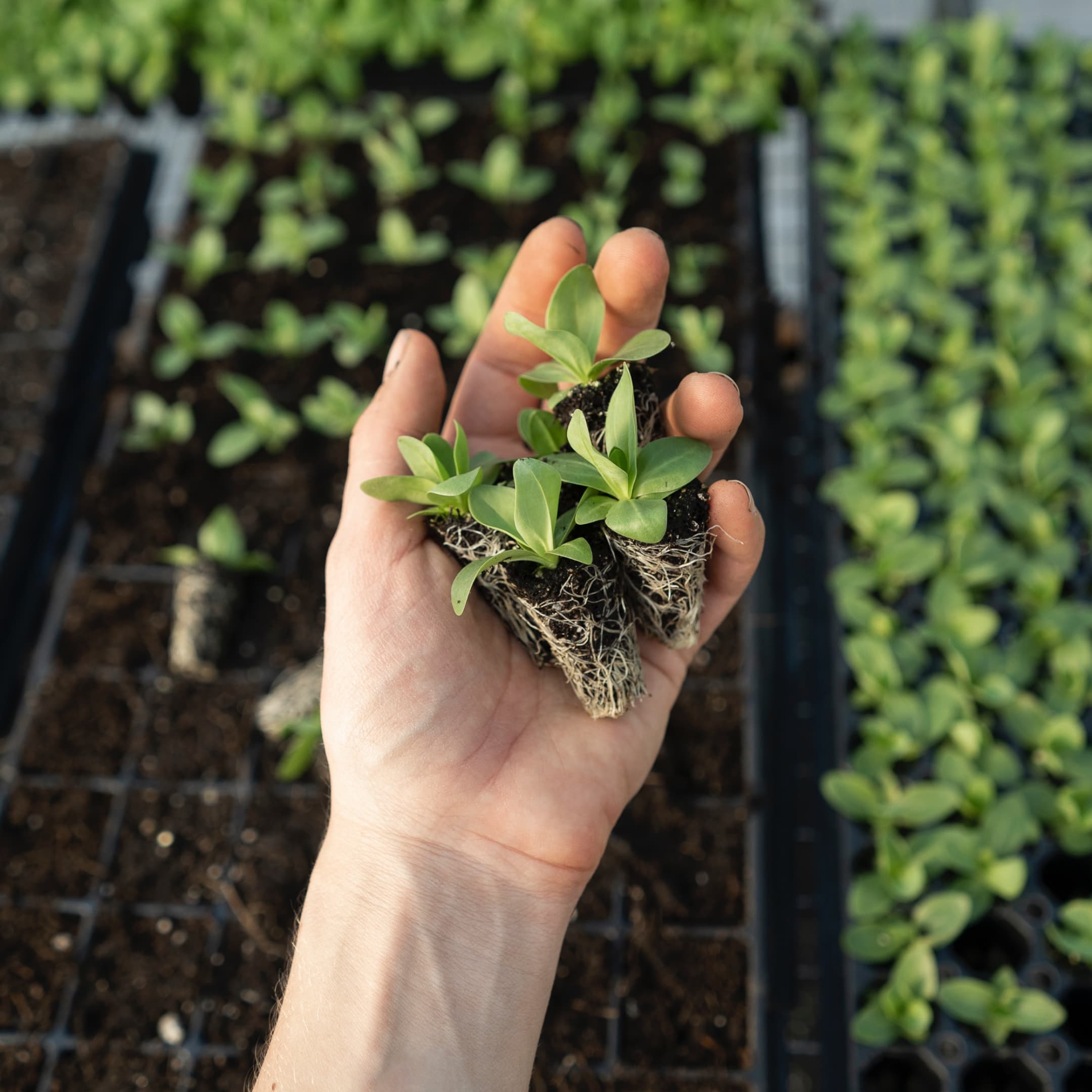Silica, a mineral commonly found in volcanic magma, is a lesser known yet critical nutrient missing from most commercial and hobbyist grows. In volcanoes, silica content influences the size, shape, and viscosity of the magma. Similarly, in plants, it helps strengthen cell walls and develop physical strength, increases their ability to absorb and utilize viscous nutrients, while helping to boost their immune systems to fight off predators, pests, and resist stress from the environment. Yet, most growers don’t use silica because they’ve either never heard of it, it’s not included in their go-to nutrient line, or they know why they need silica but don’t want to spend an arm and a leg on yet another nutrient additive. It’s an extra step, an extra purchase, and requires more math and calculations to brew your feeding blend. But adding volcanic silica into your garden can make an explosive difference.
Silicon, Silica & Silicic Acid
Silicon is one of the most naturally abundant elements found in the earth’s crust and compounds with other elements to form various types of silica. In gardens, silicon is most commonly delivered to plants in the form of potassium silicate and calcium silicate. Unfortunately, these compounds are often much larger than those that easily penetrate a plant’s cell walls and it takes a long time for them to be broken down into bioavailable forms. These forms of silica must undergo a conversion process known as silification before the plant can absorb them. Microbes (if they are even present in your garden) intake potassium silicate and calcium silicate and excrete bioavailable silicic acid — but this is a slow process that can take an extended period of time. The most critical time to deliver silica to your plants is when they are in their initial weeks of a vegetative state, which means time isn’t always on your side when you need to deliver silica quickly.
3 Main Benefits for Plants
“Silicon has been shown to strengthen the stalks of plants,” explains Jonathan Goslin, Chief Science Officer at FOOP Organic Biosciences. “It is especially useful when the fruit/buds of a plant are heavy, preventing the plant from toppling and being unable to gather sunlight and nutrients. It also has a positive effect against toxins from micronutrients, heavy metals, and pathogens. Not only that, but the presence of silicon encourages improved nutrient uptake and availability of calcium (and a number of other critical nutrients and micronutrients).”
Physical Strength
In addition to the increased ability to hold up the plant’s own fruits without assistance, silica’s ability to strengthen cell walls help to retain water and minimize loss, as well as creates a more resistant barrier for outside threats like pests and pathogens. It is worth noting that this extra physical strength also translates to increases in dry weight of your final harvests.
Threat Resistance
Not only does the added silica in the cell walls help with strength, but silica also helps to stimulate your plant’s immune system and enhance its ability to ward off abiotic and biotic threats within your garden. With these hardened cell walls, plants are better suited to withstand environmental threats such as increases in temperature that might deplete water resources, strong winds that might otherwise break branches, or long periods of drought (the hardened walls are better for retaining moisture even when the environment isn’t providing it). Similarly, these hard walls make it harder for biotic threats like insects, fungal pathogens and larvae to attack the plant, avoiding their ability to destroy living tissue, burrow into the stalks, or set up shop in your foliage.
Increased Bioavailability and Nutrient Efficiency
Bioavailable silica allows a plant to more easily absorb nutrients from the soil. Silica acts like a tow truck, pulling all of the nutrients through the vascular systems of plants. With the increase in silicic acid, the pressure of the plant’s vascular system increases, and (similar to a pressure washer or a sand blaster) the more pressure exerted, the more particles (nutrients) are pushed through the plants’ system, making it easier for the plant to absorb and deliver heavier molecules and minerals throughout the plant.
Additionally, silica allows plants to better retain moisture, avoiding excessive transpiration and helping to minimize water released from the stomata (a process that is critical for photosynthesis). With silica enhancing the uptake of both water and nutrients from the soil, your plants will function more efficiently. In addition to the increase in efficiency, the presence of silica can reduce salt buildup and increase natural resistance to salinity in your soils. Because your plants will be better at using the nutrients you’re feeding them, you’ll end up with fewer inputs overall, meaning less chance of harmful salt buildup that can attack your roots.
How to add Silica to your Grow
If you’re using a nutrient line like the one I use by FOOP Organic Biosciences, you may have lucked out and already been adding silica without knowing it. Not many brands include silica in their main nutrient line to simplify the process and give plants everything that they need without the extra steps, which is one of the reasons I personally grow all my plants with FOOP. There’s no extra step or extra bottle; simply feed your plant as you would normally and you can count on it receiving the extra boost of silica needed to facilitate your plants’ optimal growth.
Sourcing High Quality Silica
Moreover, high-quality organic products like FOOP don’t just provide any silica, they utilize organic silica sourced from volcanic ash in bioavailable, water soluble forms. In short: they eliminate the extra steps.
“In order for our nutrients to be certified organic, we had to source an unprocessed organic ingredient instead of something developed in a lab — which we found to be a volcanic mineral, that was micronized (ground up very finely) so that it can pass through fine meshes and sprinkler systems.”
Many growers don’t know that not all silica is created equally: most of the products that you may have seen at your local grow shop are produced in a laboratory — and as a result are difficult for plants to absorb. Nutrients like silica can be sourced from volcanic ash as an ideal organic alternative to the formulated silicates sold at most hydro shops.
The main difference between products like FOOP and lower quality offerings at your local grow store are the high-quality ingredients from hard to find sources like volcanic minerals that are minimally processed and micronized for easy application. Organic silica sourced from volcanic ash is more bioavailable to your plants as it is naturally the most nutrient dense material sourced from the core of the earth. Once it has spewed out, it dries and erodes into one of the most nutrient-rich mineral sources on earth.
Think about it: picture an island like Hawaii. Covered with mountains formed from millions of years of volcanic eruptions and some of the most lush, green places on the earth. That’s no accident.
Regardless of how you’re introducing silica to your grow, the benefits are clear: plants that enjoy water soluble, “unpacked” silica from organic sources such as volcanic ash tend to be stronger, healthier, more efficient. There are plenty of ways to add silica and plenty of sources to choose from, but I personally enjoy using the organic silica included in FOOP’s nutrient line to avoid an extra expenditure, as well as the extra time calculating and mixing yet another ingredient when feeding my plants.
What is a Plant Sweetener and Why is it Important for Your Plants?






Leave a comment
This site is protected by hCaptcha and the hCaptcha Privacy Policy and Terms of Service apply.